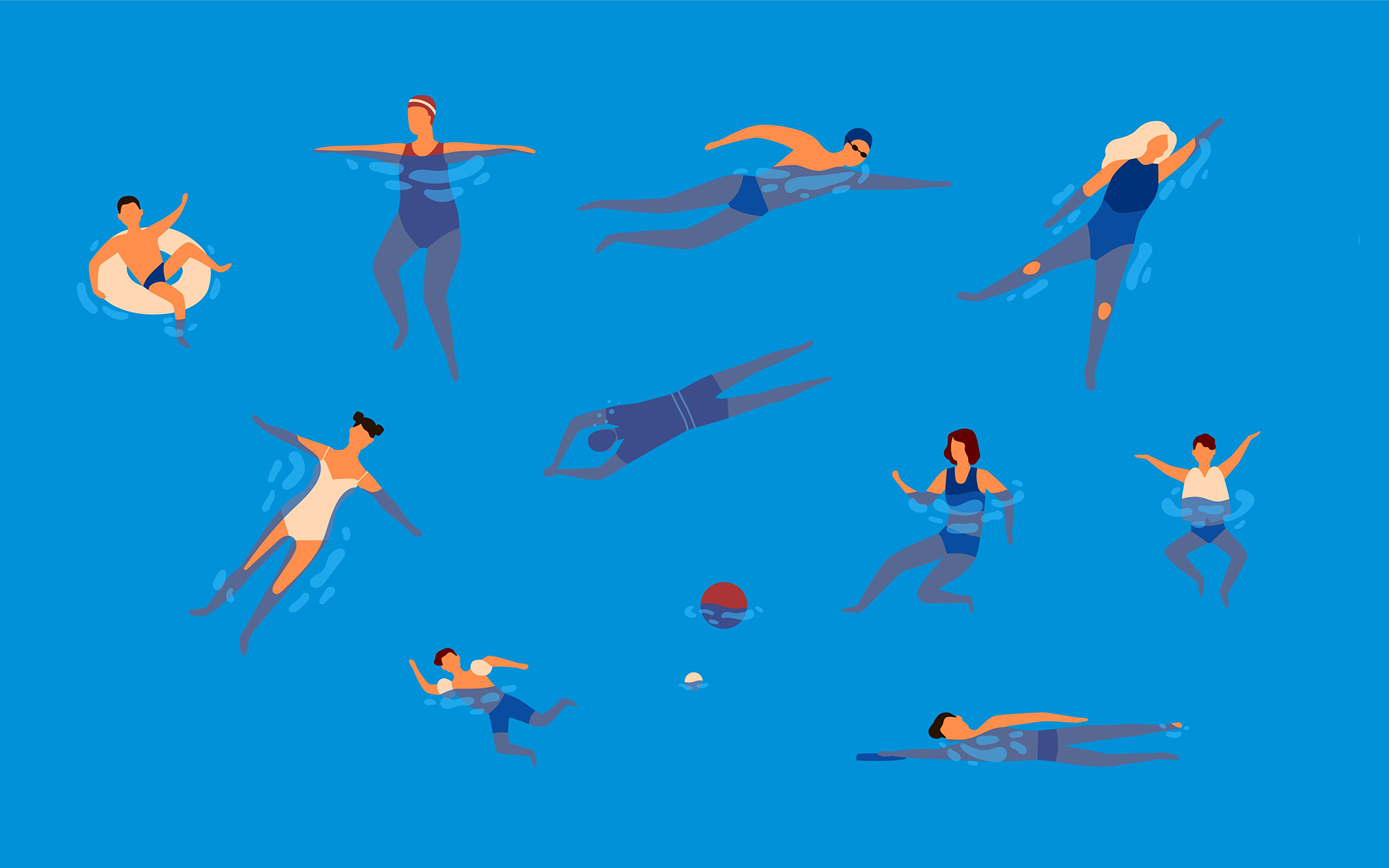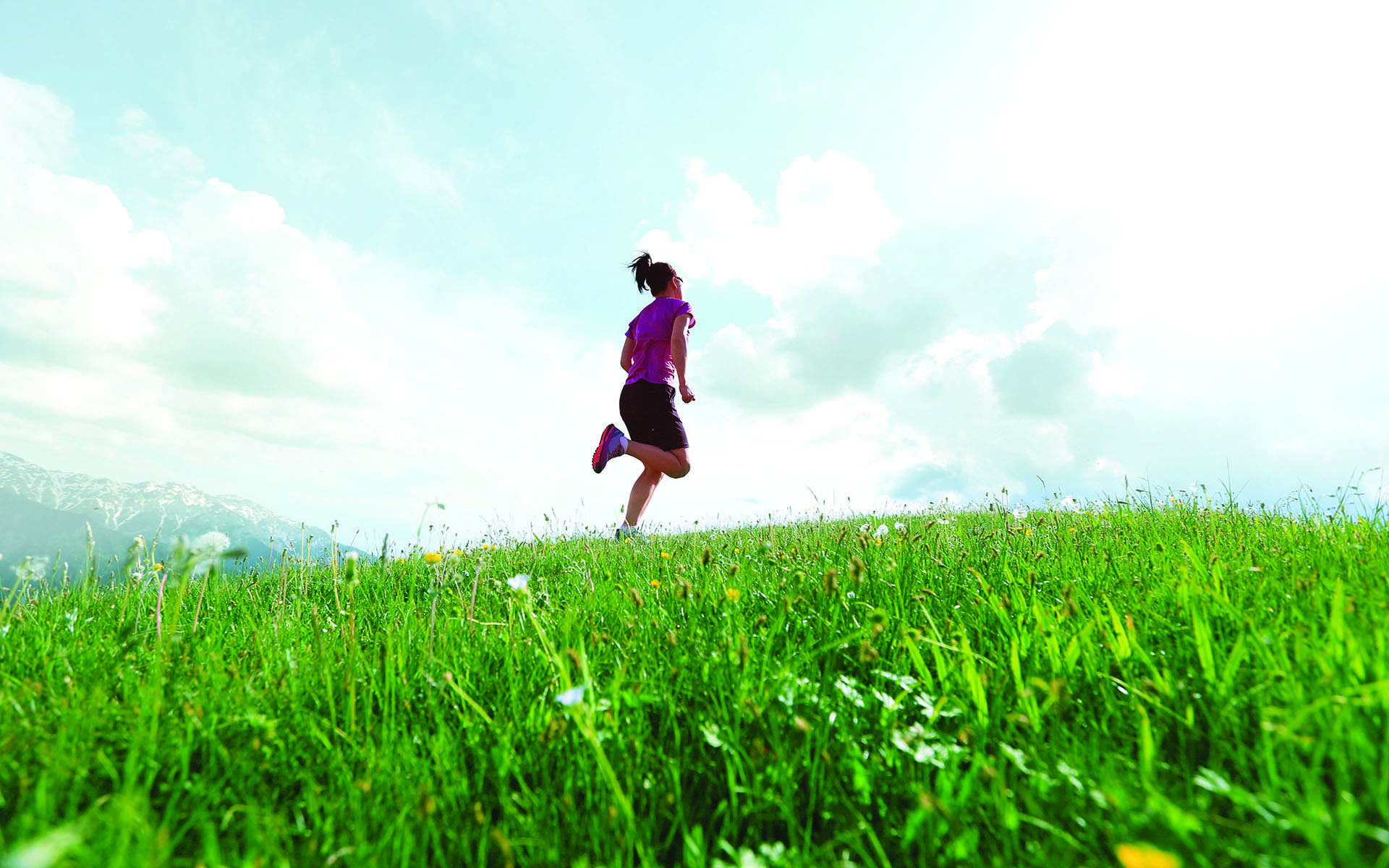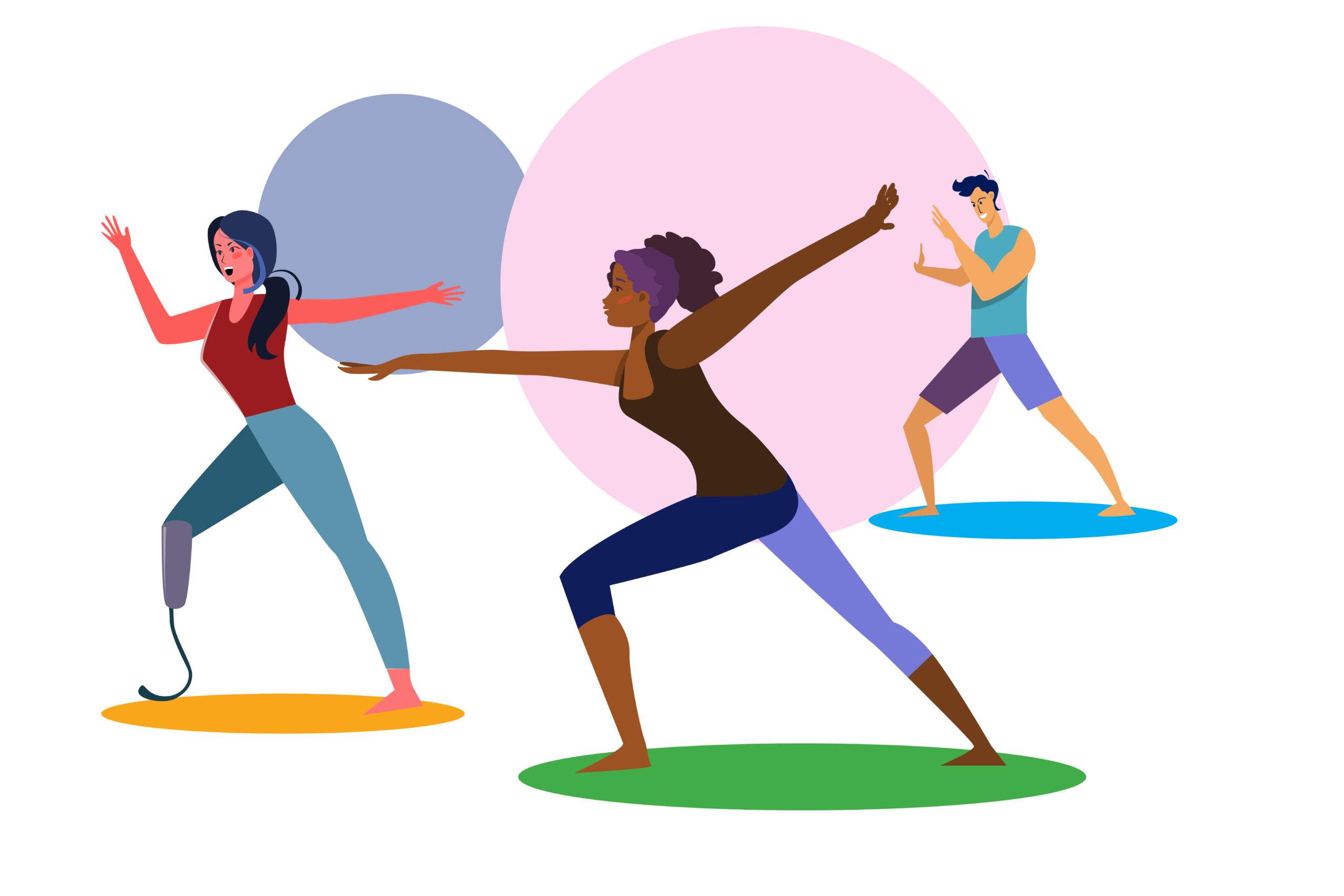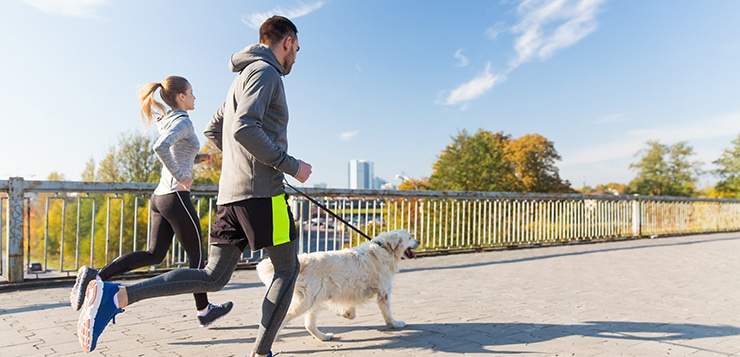I’ve loved swimming since I was four years old, when my dad taught me to stick my face in the water, lift up my feet, and do the dead man’s float. A strong swimmer since then, though not competitive, I can swim for miles if I want. But one morning last summer, while doing my early morning laps in a sunlit outdoor pool near my home, I suddenly felt I was drowning. One minute I was confidently stroking out my favorite front crawl, yards from the end of the lap, and the next I couldn’t use my arms or breathe.
Gasping and flailing, I struggled to the side, and did a kind of limp-swim to shallow territory, stopping every few feet to grab on to the wall with my shaking wet hand and finally reaching a spot where I could put my feet on the floor of the pool and begin to reckon with the panic attack that had almost taken me down. Still quivering with fear, I tried over and over to swim a few laps but the warm water felt like ice. Other swimmers looked menacing. I could not do it. Heartbroken, I dressed and went home. Swimming had been my haven for decades, my safe zone and my joy—what would my life look like without it?
Mindful Movement and Anxiety
I’m not alone in feeling anxiety and experiencing a panic attack. Anxiety is common according to a study conducted on behalf of the Anxiety Disorders Association of Canada. More than 30% of adults surveyed reported experiencing anxiety with similar results in the United States.
Dr. Norman Farb, PhD, is an associate professor in the Department of Psychology, University of Toronto and is on faculty at the Centre for Mindfulness Studies there. “I have studied stress, depression, and anxiety in the student and general community,” he told me. “There is strong evidence for meditation helping with clinically significant anxiety and panic disorders. It seems to help reduce anxiety and the frequency of panic attacks in the general population.”
Seated meditation doesn’t always work for me—I prefer to be in motion. I wondered whether I could blend movement and meditation together.
Seated meditation doesn’t always work for me—I prefer to be in motion. I wondered whether I could blend movement and meditation together.
I’d watched Katie Allen, a swim and yoga instructor, glide through Lake Ontario like a sea nymph last summer. She told me that swimming, for her, allows a break from negative thoughts.
“Ask any swimmer,” she said. “Swimming produces a meditative state, a zone of peace. There is peace and joy in swimming and freedom. You’re not ticking things off a list—a beautiful meditative state is blossoming.”
Finding a Practice That Feels Right
Dr. Farb says that what matters most is finding a practice that feels right. “For many, movement while foraging in sensation is preferable to sitting still, while for others, they like the calm of just sitting or lying down and doing a still practice.” A movement practice that’s intentionally mindful is key. “There’s no reason movement practices wouldn’t confer similar benefits if they are approached with the same attitude of exploring or foraging for what is there and prioritizing discovery over just feeling good or achieving some physical milestone,” he told me.
Thirty nine year old Libby Stoker-Lavelle of Donkin, Nova Scotia, completed her yoga teacher training recently which included training in leading guided meditation. She approaches movement with an eye to mindfulness. ”I find walking and swimming very meditative,” she says. “And I try to stay present in the moment, feel the sensations, noticing how the water feels against my skin, noticing the sensations of muscle movement when swimming, or noticing the smells in the air, the feeling of the earth squishing underfoot, and coming back to the breath while walking.”
A movement practice that’s intentionally mindful is key.
I thought about what Dr. Farb had told me: “There are meta-analyses that suggest meditation is generally effective for a variety of conditions including anxiety and panic—the question is whether a person feels the style of contemplative practice is comfortable and valuable for them.” And so I decided to put what I had learned into motion—literally. I went to the pool. After jumping into the warm water I stood for a moment and looked at the overcast sky, and thought about what I wanted out of my meditation: to swim unencumbered by fear. At first I was tentative, using the front crawl because it’s easy and very rhythmic. I developed a kind of chant I repeated as my arms moved in and out. I hoped the swimming would take care of itself as it had for decades for me. After just a few laps I felt a familiar calm rising in me. I could swim on my back or front or walk in the pool, and even a light rain on my face felt welcoming. The water felt like silk on my body and the terror, shaking, and gasping for breath were gone. Instead, I felt gratitude to once again be able to move with ease in the pool.
Mindfulness and Movement
You don’t have to be an experienced swimmer or a yoga teacher or even particularly athletic to benefit from marrying mindfulness and movement, says Dr. Farb.
“If you can get some cardiovascular training in while also meditating, that seems like a wonderful combination,” Dr. Farb says. “Or if moving through new environments such as nature helps create a sense of wonder and connection, that’s a benefit you might not get from staying in one place.”
And while mindful movement hasn’t banished anxiety and panic from my life, my practice has increased my resilience, so that when moments of anxiety or panic arise, I have another tool at my disposal to meet them. And I keep in mind these words from Dr. Farb: “The intention and cultivation of curiosity and ‘letting be’ around uncontrollable and unpredictable experience is what matters.”
read more
3 Mindfulness Practices for Mind-Body Connection
Checking in with our bodies can be a powerful first step to notice what’s arising right now and offering ourselves what we need to feel our best.
Read More
Running Can Teach Us A Lot About Courage, Resilience, and Mindfulness
Facing challenges doesn’t mean you have to fight with yourself. Physician and ultrarunner Christiane Wolf shares how she uses mindfulness skills both on and off the trails to tame anxiety and uncover resilience.
Read More
Getting Started with Mindful Movement
Riding a bike, lifting weights, sweating it out on a treadmill—each can be a mindfulness practice. Whatever the physical activity, instead of simply working out to master a skill or improve your condition, you can move and breathe in a way that shifts you from feeling busy and distracted to feeling strong and capable.
Read More










